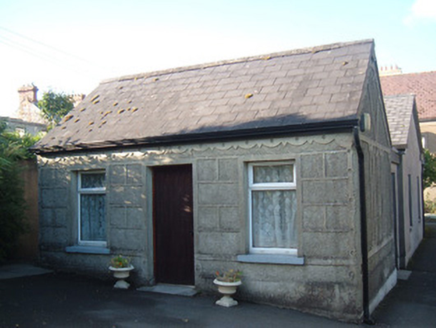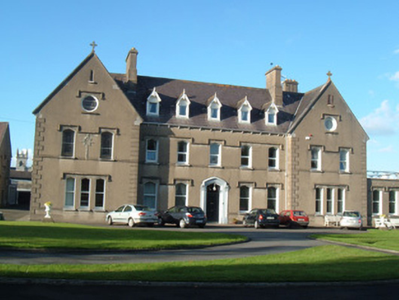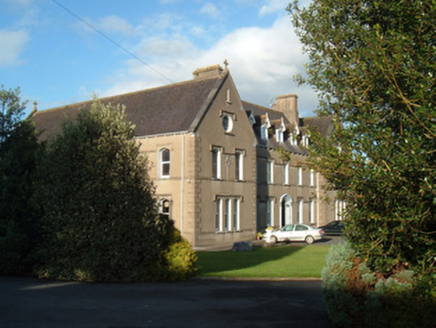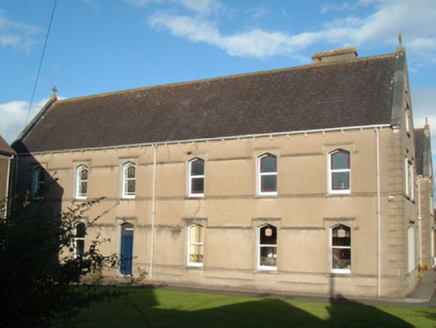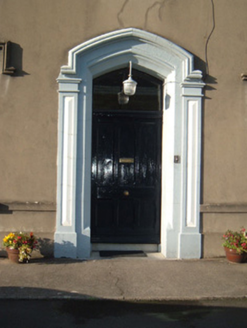Survey Data
Reg No
20803006
Rating
Regional
Categories of Special Interest
Architectural, Social
Original Use
Convent/nunnery
In Use As
Convent/nunnery
Date
1875 - 1880
Coordinates
154317, 108901
Date Recorded
18/09/2006
Date Updated
--/--/--
Description
Detached two-storey convent with attic, built 1879, comprising five-bay central block flanked by advanced gable-fronted two-bay ends and having six-bay side elevations. Flat roof extensions to east gable and rear elevation. Pitched artificial slate roof with rendered chimneystacks, dormer windows and eaves corbels, with cross finials to gables. Rendered walls with render quoins. Oculi with render label-mouldings to advanced ends, with louvered slit openings to roof space. Square-headed dormer window openings with replacement uPVC windows and carved timber bargeboards with timber pinnacles. Tudor arch window openings to front elevation, in triplets to ground floor of advanced ends. Mainly replacement uPVC windows to first floor, with one-over-one pane stained-glass timber sliding margined sash windows to ground, all with render sills and continuous label-mouldings. Tudor arch entrance door with timber panelled door, fanlight, limestone threshold and painted moulded render surround. Tudor arch doorway to east elevation with double-leaf timber panelled door, stained-glass fanlight and limestone threshold. Detached three-bay single-storey gate lodge to west, built c. 1865, with pitched roof extension to rear. Pitched artificial slate roof with uPVC rainwater goods and roughcast rendered walls with smooth render mock-Tudor detailing. Square-headed window openings with replacement uPVC windows and painted limestone sills, and square-headed doorway with replacement timber door.
Appraisal
Designed by George Ashlin, this imposing building is at the centre of an ecclesiastical complex in the centre of Buttevant. The Tudor detailing in the windows, and Gothic detailing to the doors and to the dormer bargeboards are a characteristic theme of nineteenth-century ecclesiastical buildings. It is enhanced by its setting in landscaped grounds.
